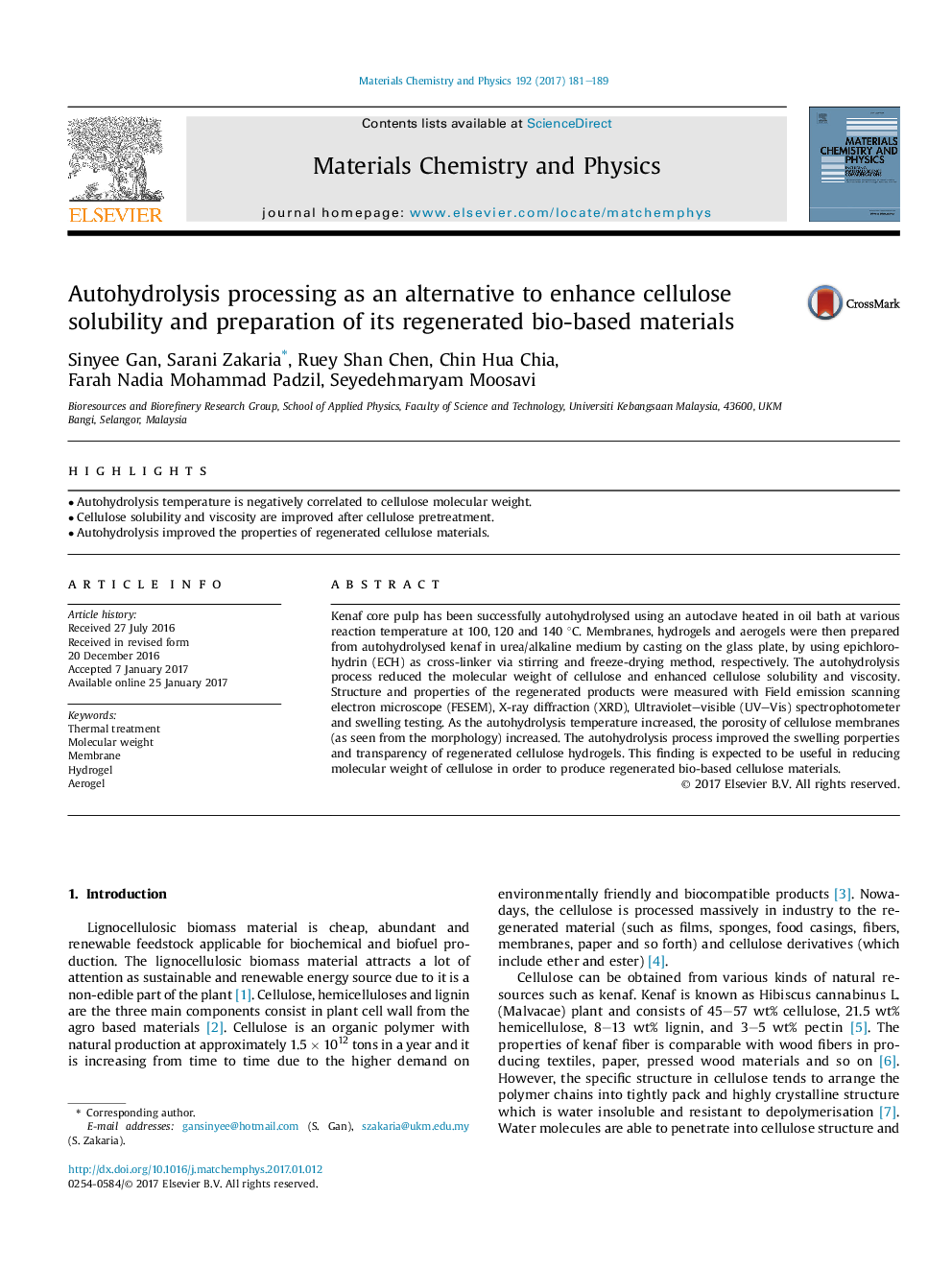| Article ID | Journal | Published Year | Pages | File Type |
|---|---|---|---|---|
| 5448226 | Materials Chemistry and Physics | 2017 | 9 Pages |
Abstract
Kenaf core pulp has been successfully autohydrolysed using an autoclave heated in oil bath at various reaction temperature at 100, 120 and 140 °C. Membranes, hydrogels and aerogels were then prepared from autohydrolysed kenaf in urea/alkaline medium by casting on the glass plate, by using epichlorohydrin (ECH) as cross-linker via stirring and freeze-drying method, respectively. The autohydrolysis process reduced the molecular weight of cellulose and enhanced cellulose solubility and viscosity. Structure and properties of the regenerated products were measured with Field emission scanning electron microscope (FESEM), X-ray diffraction (XRD), Ultraviolet-visible (UV-Vis) spectrophotometer and swelling testing. As the autohydrolysis temperature increased, the porosity of cellulose membranes (as seen from the morphology) increased. The autohydrolysis process improved the swelling porperties and transparency of regenerated cellulose hydrogels. This finding is expected to be useful in reducing molecular weight of cellulose in order to produce regenerated bio-based cellulose materials.
Related Topics
Physical Sciences and Engineering
Materials Science
Electronic, Optical and Magnetic Materials
Authors
Sinyee Gan, Sarani Zakaria, Ruey Shan Chen, Chin Hua Chia, Farah Nadia Mohammad Padzil, Seyedehmaryam Moosavi,
